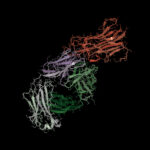
Speakers at a 2013 ACR State-of-the-Art Clinical Symposium, held April 20–21 in Chicago, highlighted treatment advances in the top three areas of concern for many rheumatologists: osteoarthritis (OA), rheumatoid arthritis (RA), and systemic lupus erythematosus (SLE).
Treatment Options for OA
Steven B. Abramson, MD, chair of the division of rheumatology at New York University Hospital for Joint Diseases in New York City, reminded attendees that patients with OA are living with a condition that can lead to depression, interruption of sleep, and fibromyalgia-like regional pain. The numerous pain-relief therapies available are often inadequate or have harmful side effects, he said. Unlike treatment of RA, there are still no disease-modifying agents that slow OA progression and improve symptomatology.
Commonly used analgesics—acetaminophen, nonsteroidal antiinflammatory drugs (NSAIDs), COX-2 inhibitors, topical NSAIDs, intraarticular corticosteroids, intraarticular hyaluronic acid, glucosamine, chondroitin sulphate, and others—have a modest effect on pain. In large population studies or clinical trials, the effect is about 30%, “with the placebo effect in these studies actually exceeding the effect size of pharmacologic treatment,” he said.
Concern about gastrointestinal and cardiovascular events associated with NSAIDs has led to more reliance on opioids, which have a greater effect on pain. Use of opioids in elderly patients, however, comes with risk, he said. A 2010 report found that opioid use in the elderly was associated with increased risk of cardiac events, falls, fractures, and all-cause mortality when compared with NSAIDs.1
A new analgesic under investigation is tanezumab, a humanized monoclonal antibody that binds and inhibits nerve growth factor. A phase II trial demonstrated a significant reduction in joint pain and improvement in function with mild and moderate adverse events among patients with moderate to severe knee OA.2 When the drug was introduced into a larger population in phase II and III trials, however, there was a significant incidence of rapidly progressive OA, characterized by destruction of cartilage and bone, fragments, and necrosis, particularly in patients treated with both tanezumab and an NSAID.
Following those results, the Food and Drug Administration placed a temporary hold on further clinical trials, which has now been lifted. Tanezumab is in phase III trials, with risk-mitigation strategies in place, Dr. Abramson said.
Weight-loss strategies have also been effective, with studies showing that bariatric surgery can significantly reduce OA pain. Dr. Abramson is participating in a prospective study using lap band surgery for patients with a BMI of 31 to 35 and one or more comorbidities (diabetes, hypertension, OA) to assess the effect of the surgery on inflammatory mediators and other symptomatology.
The “holy grail” in OA remains identifying the chemical and imaging biomarkers that can predict rapid disease progression, Dr. Abramson said. “We have to look at the etiologies, the phenotypes of what, at the earliest stages, may be driving a person’s knee OA to understand that, if it’s being driven by different etiologies, then the early markers and targets may be different. In each of these areas—whether it’s aging, bone, inflammation, or obesity—there may be early, different driving features,” he said.
RA Therapies
The pace of progression for new RA therapies “continues to be amazing,” said Clifton B. Bingham III, associate professor of medicine and director of the Johns Hopkins University Arthritis Center in Baltimore. He said that trials investigating whether medications can be tapered or withdrawn for certain patients have promising implications.
One trial, the PRESERVE study, was the first to look at whether low disease activity could be sustained with reduced doses or withdrawal of etanercept in patients who had moderately active disease. Researchers found that a reduced or conventional dose of the drug along with methotrexate was more effective at maintaining low disease activity than methotrexate alone after etanercept was withdrawn.3 “These data support this as a reasonable strategy in some patients, but it is important that they are maintained in a low–disease activity state before you begin to [taper or withdraw medication],” Dr. Bingham said.
Head-to-head comparison studies of a number of RA therapies have also been published in the past year. One of these compared the efficacy of subcutaneous abatacept versus subcutaneous adalimumab in patients with active RA who were naive to treatment with biologic agents and had had an inadequate response to methotrexate.4 Another study, ADACTA, compared tocilizumab with adalimumab.5 A novel oral Janus kinase inhibitor, tofacitinib, has been compared with adalimumab and placebo for its efficacy in patients with RA who also receive background methotrexate.6 Trials of unapproved, investigational agents are continuing, Dr. Bingham reported.
“There are a lot of therapies out there for patients who are refractory. Our challenge will be how long do we treat with one thing before we move to another, and whether there is anything we can do to predict who will respond to one medication versus another,” he said. “At this point, with all the genomics and everything else we are doing that may not be ready for prime time, it is encouraging that we may be able to find some biomarkers to identify patients who may be appropriate for certain types of therapies.”
Additional Therapies Needed for Lupus
Even though a variety of new medication choices are not yet available for SLE, strides have been made over the past 15 years, according to Elena M. Massarotti, MD, associate professor of medicine at Harvard Medical School and Brigham and Women’s Hospital in Boston. She noted that challenges remain in lupus, including early diagnosis and disease monitoring. “Most of the current treatment regimens … require corticosteroids, which remain a major cause of morbidity in patients with lupus, so regimens that will mitigate the use of corticosteroids should be paramount.”
Dr. Massarotti highlighted changes that have been made in the past year to classification criteria for SLE. The Systemic Lupus International Collaborating Clinics (SLICC) Revised SLE Criteria is a revision and validation of the ACR classification criteria. According to the SLICC criteria, a patient must satisfy at least four criteria for classification of SLE, including at least one clinical criterion and one immunologic criterion, OR the patient must have biopsy-proven lupus nephritis in the presence of antinuclear antibodies or anti–double-stranded DNA antibodies.7
As with OA and RA, the search for biomarkers continues in SLE, but there is not yet a single parameter that reliably identifies or subtypes all lupus patients, Dr. Massarotti said. “Because SLE is heterogeneous, it is likely that several biomarkers may be at play.” The several being investigated include those that define disease activity, those that define disease severity or disease subtype, and the organ-specific biomarkers.” She said that the complement system may be a source of biomarkers.
Treatment of lupus nephritis has been refined in recent years. Among the important issues learned about treatment is recognition of both an induction phase and a maintenance phase and that remission predicts patient survival and renal survival. About 20% to 30% of patients with lupus nephritis do not respond to therapy, and for many patients, the response can take months. Response rates also can differ depending on the patient’s ethnicity, Dr. Massarotti said.
Clinical trials of lupus therapies need more homogeneous groups “so that we can group patients a bit better in terms of autoantibodies and clinical manifestations. Racial and ethnic differences will be important features of clinical trials that we could learn from,” she said.
Kathy Holliman is a medical journalist based in New Jersey.
References
- Solomon DH, Rassen JA, Glynn RJ, Lee J, Levin R, Schneeweiss S. The comparative safety of analgesics in older adults with arthritis. Arch Intern Med. 2010;170:1968-1977.
- Lane NE, Schnitzer TJ, Birbara CA, et al. Tanezumab for the treatment of pain from osteoarthritis of the knee. N Engl J Med. 2010;363:1521-1531.
- Smolen JS, Nash P, Durez P, et al. Maintenance, reduction, or withdrawal of etanercept after treatment with etanercept and methotrexate in patients with moderate rheumatoid arthritis (PRESERVE): A randomized controlled trial. Lancet. 2013;381:918-929.
- Weinblatt ME, Schiff M, Valente R, et al. Head-to-head comparison of subcutaneous abatacept versus adalimumab for rheumatoid arthritis: Findings of a phase IIIb, multinational prospective, randomized study. Arthritis Rheum. 2013;65:28-38.
- Gabay C, Emery P, van Vollenhoven R, et al. Tocilizumab monotherapy versus adalimumab monotherapy for treatment of rheumatoid arthritis (ADACTA): A randomized, double-blind, controlled phase 4 trial. Lancet. 2013;381:1541-1550.
- van Vollenhoven RF, Fleischmann R, Cohen S, et al. Tofacitinib or adalimumab versus placebo in rheumatoid arthritis. N Engl J Med. 2012;367:508-519.
- Petri M, Orbai AM, Alarcon GS, et al. Derivation and validation of the Systemic Lupus International Collaborating Clinics classification criteria for systemic lupus erythematosus. Arthritis Rheum. 2012;64:2677-2686.

